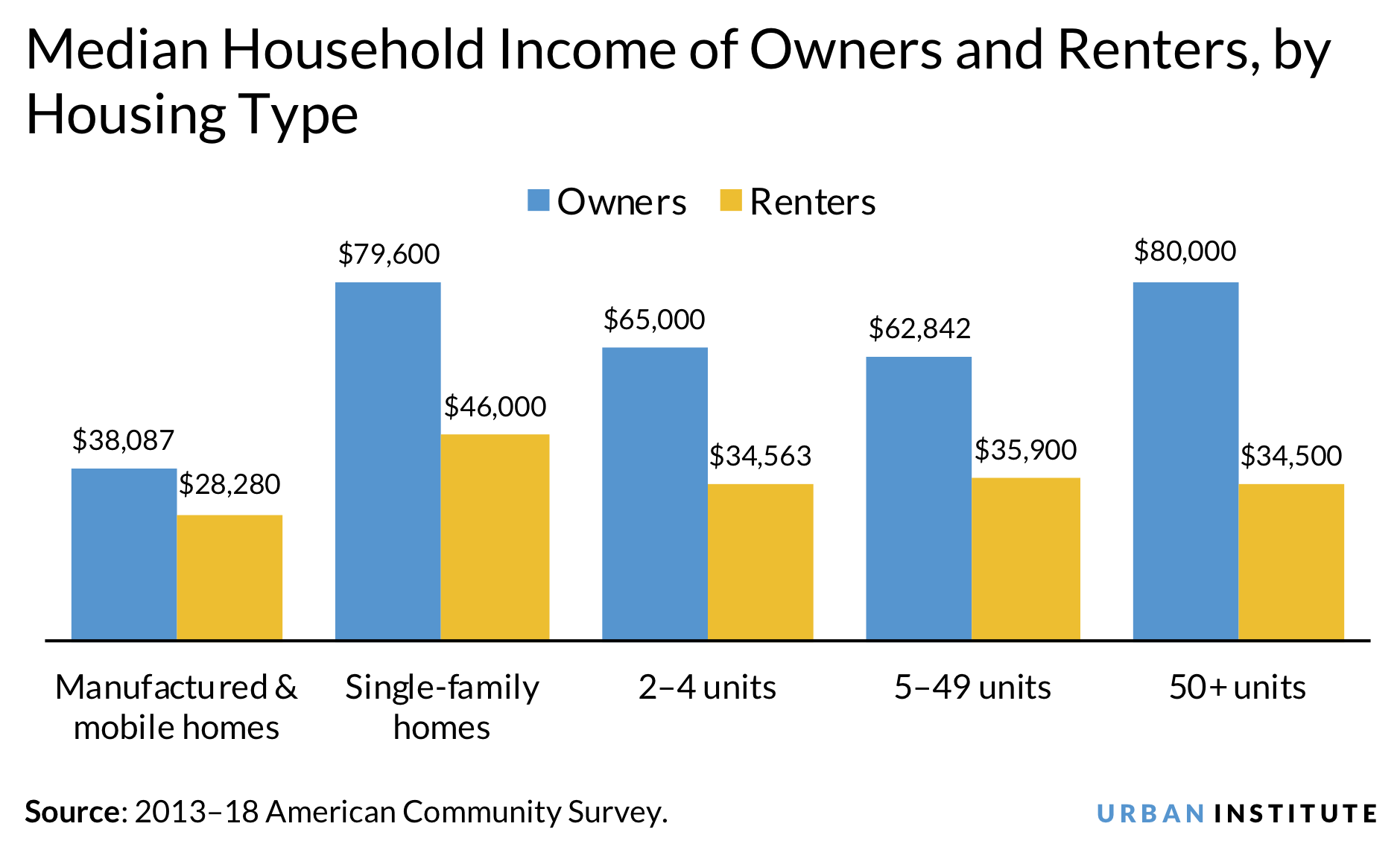
<p><a href="https://creativecommons.org/licenses/by-sa/4.0/deed.en">Brent Allison for Pratt Homes</a></p>
In analyses of COVID-19’s effects on the housing market, the manufactured housing sector is largely overlooked. Nearly 22 million people, or 7 percent of US households, live in manufactured housing. Manufactured homes make up about 3 percent of housing in urban areas and 15 percent in rural areas, and 71 percent of these units are owner occupied.
These 22 million renters and owners tend to have lower incomes and work in industries that are vulnerable to the pandemic, yet these households mostly fall outside the protections offered by the Coronavirus Aid, Relief, and Economic Security (CARES) Act. As policymakers negotiate the next round of coronavirus relief, will they support these families?
Occupants of manufactured homes work in industries and occupations that are most vulnerable to COVID-19
Owners and renters of manufactured homes are more likely than residents of other housing types to work in industries that have suffered significant job losses during the pandemic. For example, 35 percent of owners of manufactured homes work in the five industries that have lost the most jobs during the crisis (food and accommodation, retail, construction, entertainment, and other services), compared with 24 percent of owners of single-family homes. Additionally, 43 percent of renters in manufactured homes work in the five most vulnerable industries, compared with 27 to 35 percent of renters in other types of rental units. In fact, the owners of manufactured homes are slightly more vulnerable on this measure than renters in other types of housing.

We see similar results among occupations: 13.5 percent of owner-occupants of manufactured homes are service workers, versus 8.2 percent of owner-occupants of single-family homes. The same is true for 20 percent of renters of manufactured homes, higher than for any other property type except that of renters in two-to-four-unit buildings, another group that is particularly vulnerable during this pandemic.
Occupants of manufactured homes have lower incomes and pay less for housing
The median income of manufactured homeowners ($38,087) is well below the $79,800 for single-family owner-occupants. In fact, the median income of manufactured home owners is comparable with that of renters in other housing types. The median income of manufactured home renters is lower than for any other group.

It is important to note that the cost of living in manufactured housing is well below the cost of living in other housing types. The monthly housing payment in manufactured homes is $505 for owners (which includes loan payments, lot rental payments, utilities, insurance, and property taxes) and $670 for renters (which includes rent and utilities), versus $1,168 for single-family owner-occupants and $1,079 for single-family renters.

Occupants of manufactured housing have received little government support to weather the pandemic
Despite their greater vulnerability, most owners of manufactured homes do not qualify for CARES Act forbearance relief, because 77 percent of all new manufactured homes are titled as “personal property” rather than “real estate.” Of the homes titled as personal property, only Federal Housing Administration (FHA) Title 1 loans (which allow for the purchase of the structure alone and are a tiny subset of the market) qualify for CARES Act forbearance. To take out a mortgage, the manufactured home must be titled as real property. In most states, this requires the borrower to own both the structure and the land it is sited on. Some mortgages on manufactured homes are federally backed, hence triggering CARES Act coverage, but others are not. Mortgages on manufactured home structures alone are called chattel loans, which are generally held in the portfolio of the originating institution and serviced by this institution. It is therefore up to each mortgage servicer to determine whether it wants to offer forbearance and on what terms.
Most chattel lenders are offering forbearance, but some are requiring quicker payback periods than the standard terms afforded to FHA and government-sponsored enterprise borrowers. And in many cases, the forborne amount must be repaid with interest. In short, manufactured home borrowers, who often have low incomes, generally receive forbearance on less favorable terms than wealthier borrowers with federally backed mortgages. The Health and Economic Recovery Omnibus Emergency Solutions (HEROES) Act, if passed, would extend the benefits of federal forbearance programs to households without federally backed mortgages and applies similar forbearance and repayment programs for personal debt, which would include chattel loans on manufactured homes.
Renters also did not receive immediate relief. The CARES Act eviction moratorium, which expired July 24, did not apply to most renters in manufactured homes, with two exceptions: the manufactured home parks financed with federally backed mortgages (2,400 out of 45,000) and the few investor-owned properties with federal loans. Eviction moratoriums that some cities and states imposed are also expiring. And though many manufactured home renters received the weekly $600 federal unemployment benefits, those expired on July 31, and the status of a replacement payment is unclear at the time of this writing.
The only hope for struggling renters is either an extension of unemployment benefits or passage of the HEROES Act. The latter includes eviction protections and rental assistance programs for those who cannot make their rental payments, regardless of whether the landlord has a federally backed loan.
In developing policies to keep people safely housed during the COVID-19 pandemic, it is important to identify the most vulnerable groups and the sources of their vulnerability. The 22 million renters and owners living in manufactured homes are particularly vulnerable during the pandemic because of their service-industry-focused jobs and their low incomes. They also need support during the next round of funding.
Let’s build a future where everyone, everywhere has the opportunity and power to thrive
Urban is more determined than ever to partner with changemakers to unlock opportunities that give people across the country a fair shot at reaching their fullest potential. Invest in Urban to power this type of work.